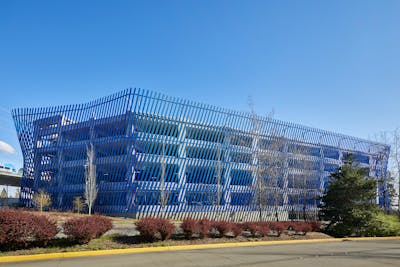
San Francisco International Air Traffic Control Tower
Structural innovation delivers a series of firsts for this best-in-class workspace just four miles from the San Andreas fault
Project Facts
| Location | San Francisco, California |
| Owner | FAA / SFO |
| Size | 55,000 SF |
| Cost | $122 million |
| Status | Completed 2015 |
| Certifications | LEED Gold |
Overview
The seventh-busiest airport in North America, San Francisco International (SFO) is also one of the most challenging for air traffic controllers who safely guide more than 1,000 aircraft daily on four runways.
Services
About the Project
New technologies and a seismically vulnerable existing tower — just four miles from the San Andreas Fault — led SFO to develop a new facility that exemplifies structural engineering innovation as it provides a safe, stable, and best-in-class workspace for controllers.
The Air Traffic Control Tower and Integrated Base Facility represent several firsts for the Federal Aviation Administration (FAA) — the first tower delivered with the airport in the lead; the first delivered using a design-build bridging documents package; and the first observation cab with a 270-degree unobstructed view.
The tower’s structural system, a cast-in-place reinforced concrete core cylinder, was selected employing performance-based seismic design. The tower was designed using vertical post tensioning to provide a self-centering action in the event of a major earthquake as well as a tuned mass damping system to mitigate accelerations due to wind. At the tower base, a three-story, 55,000-sf integrated base facility (IBF) serves as office and administrative space for both the airport and the FAA. It features office spaces, meeting rooms, wellness spaces and terminal space that provides a secure connection for passengers between T1 and T2.
The IBF incorporates blast resistant design along the roadway and performance-based seismic design. We performed a nonlinear time history response analysis with Perform 3D to verify that the expected behavior of the structure would meet the airport’s performance objective of remaining operational at the maximum considered earthquake (MCE).



